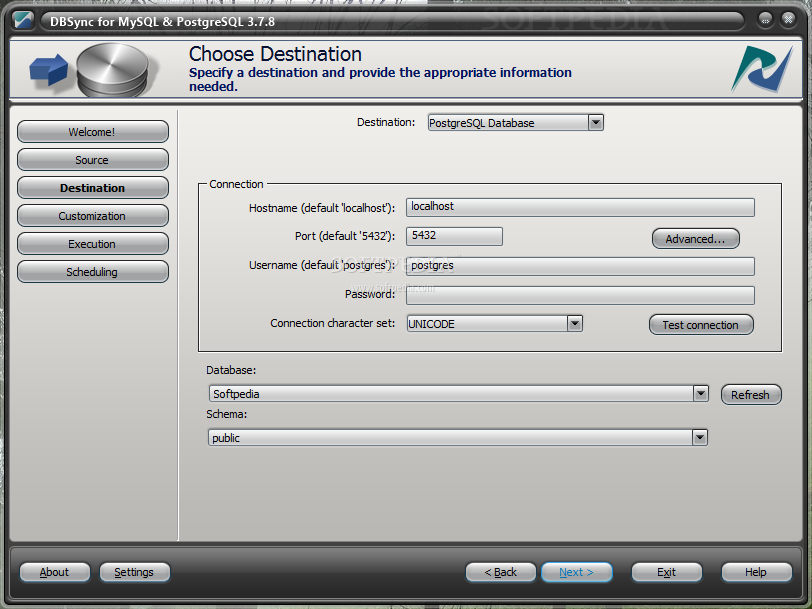Get Postgres Tips and Tricks
Subscribe to get advanced Postgres how-tos.
Welcome to pgAdmin 4. pgAdmin is the leading Open Source management tool forPostgres, the world’s most advanced Open Source database. pgAdmin 4 is designedto meet the needs of both novice and experienced Postgres users alike, providinga powerful graphical interface that simplifies the creation, maintenance and useof database objects.
Pgadmin 4 Download

Installing PostgreSQL in Ubuntu 20.04. Log into your Ubuntu system and update the system. What is pgAdmin 4 and How it works? PgAdmin is using as a database management tool in the PostgresDB community. Prices for apple. A database tool helps you to create schemas, query ad-hoc, backup, or dive deeper to troubleshoot a database issue and finally increases your productivity. PgAdmin offers a clean and intuitive user interface to simplify the creation, maintenance, and use of database objects. PgAdmin 4 pgAdmin 4 is a complete rewrite of pgAdmin, built using Python and Javascript/jQuery. A desktop runtime written in NWjs allows it to run standalone for individual users, or the web application code may be deployed directly on a web server for use by one or more users through their web browser.
- Getting Started
- Connecting To A Server
- Managing Cluster Objects
- Managing Database Objects
- Creating or Modifying a Table
- Management Basics
- Backup and Restore
- Developer Tools
- pgAgent
- pgAdmin Project Contributions
- Release Notes
Pgadmin 4 Tutorials


Tell us what you love about the package or pgAdmin 4, or tell us what needs improvement. Share your experiences with the package, or extra configuration or gotchas that you've found. If you use a url, the comment will be flagged for moderation until you've been whitelisted. Disqus moderated comments are approved on a weekly schedule if not sooner.
NOTE: This section assumes that you have downloaded and installed pgAdmin 4.

pgAdmin is the most popular and feature-rich platform for administration and development of PostgreSQL databases. Check the pgAdmin official page for more information.

To connect to your remote PostgreSQL database server using pgAdmin 4, follow these steps:
Open port 5432 in your firewall (on Linux only). For example, if you are using ufw, you would run the following commands:
IMPORTANT: By default, the database port for the nodes in this solution cannot be accessed over a public IP address. As a result, you will only be able to connect to your database nodes from machines that are running in the same network. For security reasons, we do not recommend making the database port accessible over a public IP address. If you must make it accessible over a public IP address, we recommend restricting access to a trusted list of source IP addresses using firewall rules. For development purposes, you can also use a VPN or SSH tunnel. Refer to the FAQ for information on accessing restricted ports using an SSH tunnel or opening ports in the server firewall.
At the server console, edit the file installdir/postgresql/data/pg_hba.conf and add the following at the end, then save the file:
Edit the file installdir/postgresql/data/postgresql.conf and replace this line
with:
Avast free download. Save the file.
Restart the PostgreSQL server:
Your PostgreSQL server is now configured to accept remote connections, and you can connect to it using pgAdmin 4. Follow these steps:
Launch pgAdmin 4.
Go to the “Dashboard” tab. In the “Quick Link” section, click “Add New Server” to add a new connection.
Select the “Connection” tab in the “Create-Server” window. Then, configure the connection as follows:
Enter your server’s IP address in the “Hostname/ Address” field.
Specify the “Port” as “5432”.
Enter the name of the database in the “Database Maintenance” field.
Torrent software download for windows 10. Enter your username as postgres and password (use the same password you used when previously configuring the server to accept remote connections) for the database.
Click “Save” to apply the configuration.
Check that the connection between pgAdmin 4 and the PostgreSQL database server is active. Navigate to the “Dashboard” tab and find the state of the server in the “Server activity” section:
